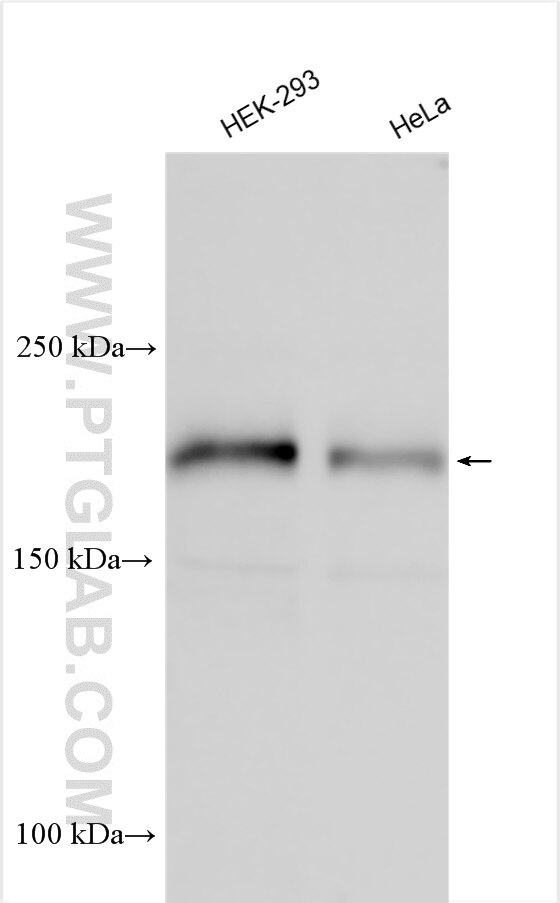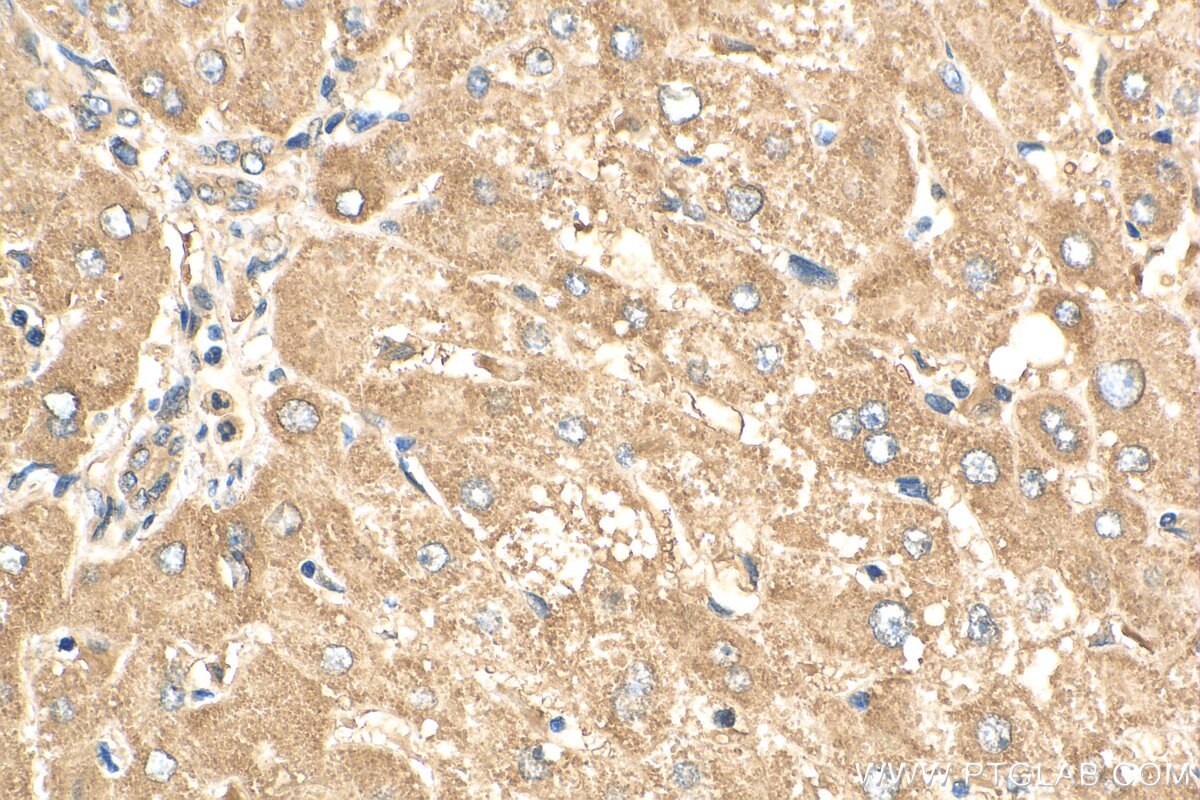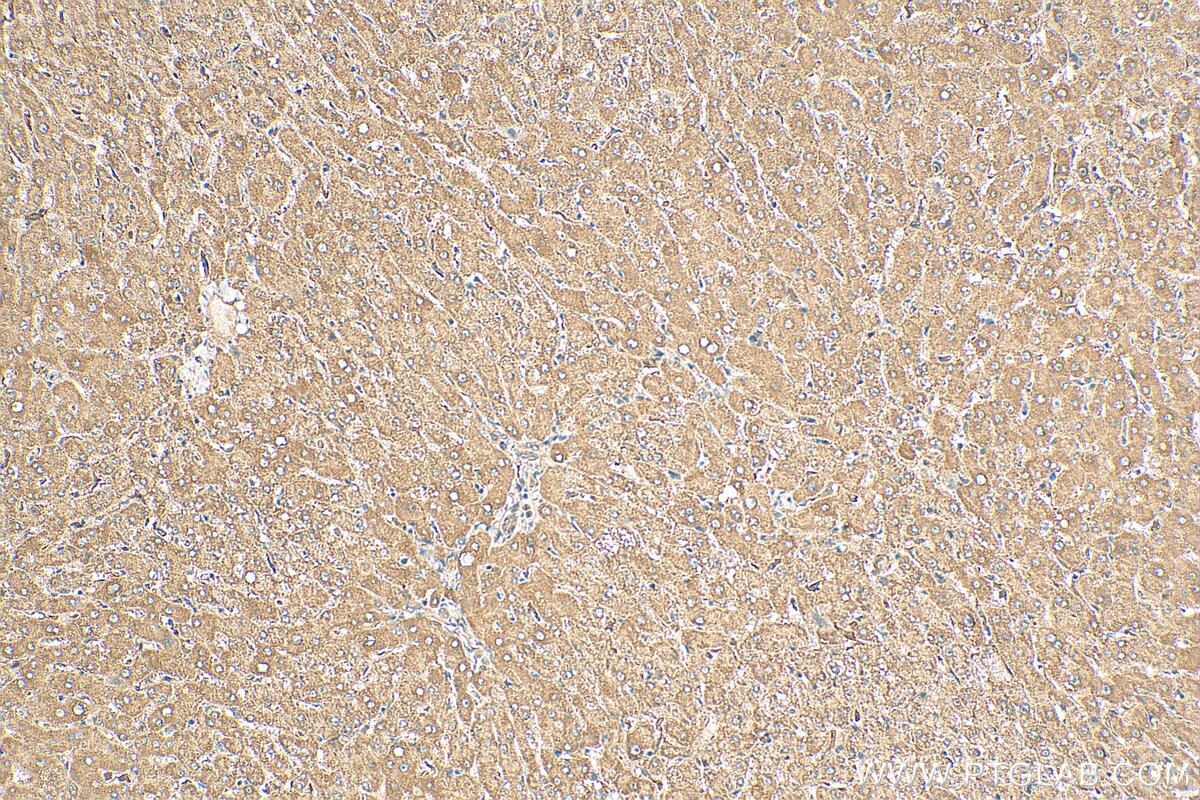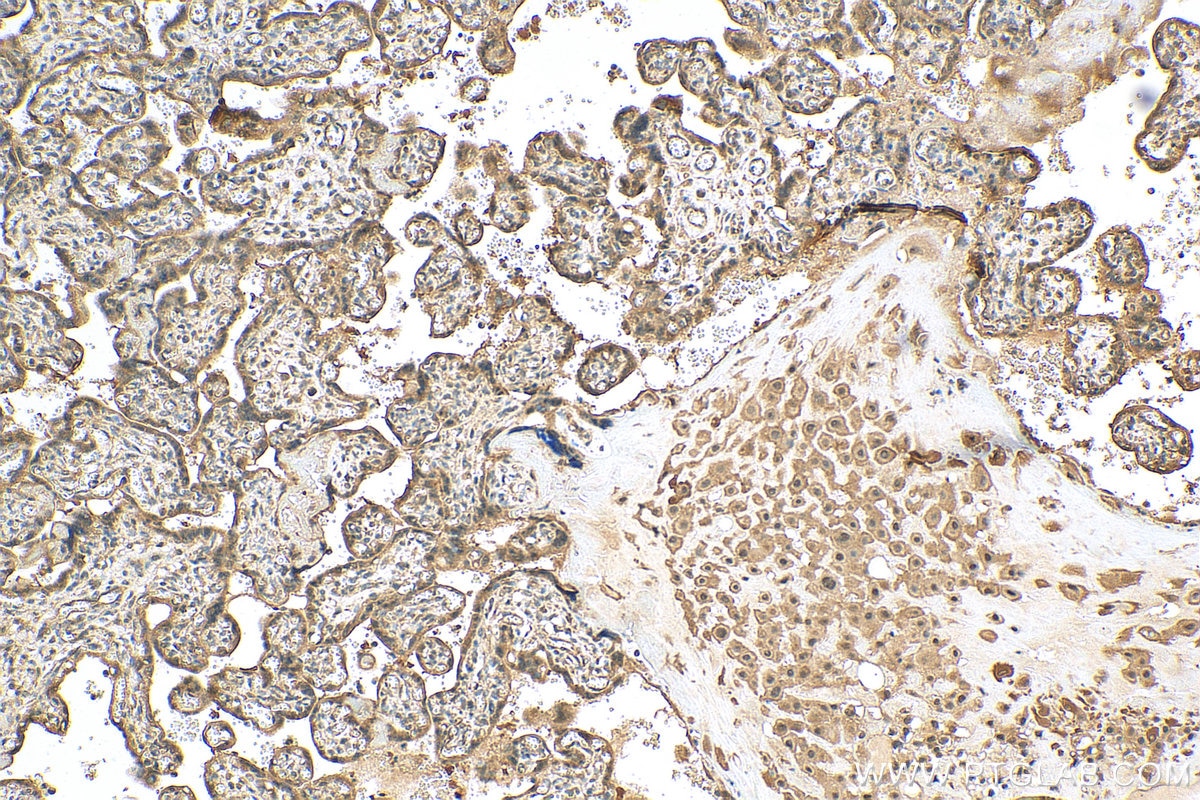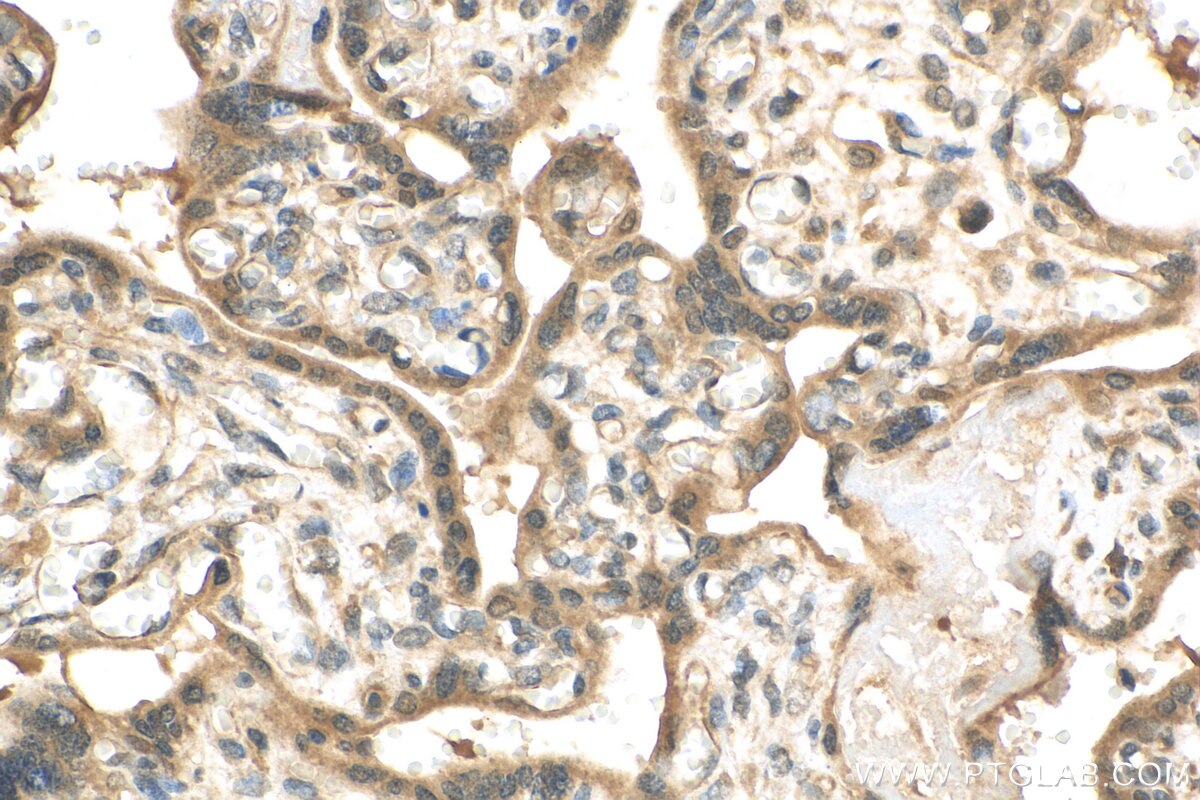Anticorps Polyclonal de lapin anti-CEP162
CEP162 Polyclonal Antibody for IHC, WB, ELISA
Hôte / Isotype
Lapin / IgG
Réactivité testée
Humain
Applications
WB, IHC, ELISA
Conjugaison
Non conjugué
N° de cat : 30210-1-AP
Synonymes
Galerie de données de validation
Applications testées
| Résultats positifs en WB | cellules HEK-293, cellules HeLa |
| Résultats positifs en IHC | tissu hépatique humain, tissu placentaire humain il est suggéré de démasquer l'antigène avec un tampon de TE buffer pH 9.0; (*) À défaut, 'le démasquage de l'antigène peut être 'effectué avec un tampon citrate pH 6,0. |
Dilution recommandée
| Application | Dilution |
|---|---|
| Western Blot (WB) | WB : 1:500-1:2000 |
| Immunohistochimie (IHC) | IHC : 1:50-1:500 |
| It is recommended that this reagent should be titrated in each testing system to obtain optimal results. | |
| Sample-dependent, check data in validation data gallery | |
Informations sur le produit
30210-1-AP cible CEP162 dans les applications de WB, IHC, ELISA et montre une réactivité avec des échantillons Humain
| Réactivité | Humain |
| Hôte / Isotype | Lapin / IgG |
| Clonalité | Polyclonal |
| Type | Anticorps |
| Immunogène | CEP162 Protéine recombinante Ag32953 |
| Nom complet | KIAA1009 |
| Masse moléculaire calculée | 162 kDa |
| Poids moléculaire observé | 180 kDa |
| Numéro d’acquisition GenBank | NM_001286206.1 |
| Symbole du gène | KIAA1009 |
| Identification du gène (NCBI) | 22832 |
| Conjugaison | Non conjugué |
| Forme | Liquide |
| Méthode de purification | Purification par affinité contre l'antigène |
| Tampon de stockage | PBS avec azoture de sodium à 0,02 % et glycérol à 50 % pH 7,3 |
| Conditions de stockage | Stocker à -20°C. Stable pendant un an après l'expédition. L'aliquotage n'est pas nécessaire pour le stockage à -20oC Les 20ul contiennent 0,1% de BSA. |
Informations générales
CEP162, also known as KIAA1009 and QN1, was found in organisms ranging from trypanosomes to vertebrates. A role for CEP162, involved in required to promote assembly of the transition zone in primary cilia. CEP162 acts by specifically recognizing and binding the axonemal microtubule. CEP162 localizes to the distal ends of centrioles before ciliogenesis and directly binds to axonemal microtubule, thereby promoting and restricting transition zone formation specifically at the cilia base.
Protocole
| Product Specific Protocols | |
|---|---|
| WB protocol for CEP162 antibody 30210-1-AP | Download protocol |
| IHC protocol for CEP162 antibody 30210-1-AP | Download protocol |
| Standard Protocols | |
|---|---|
| Click here to view our Standard Protocols |
